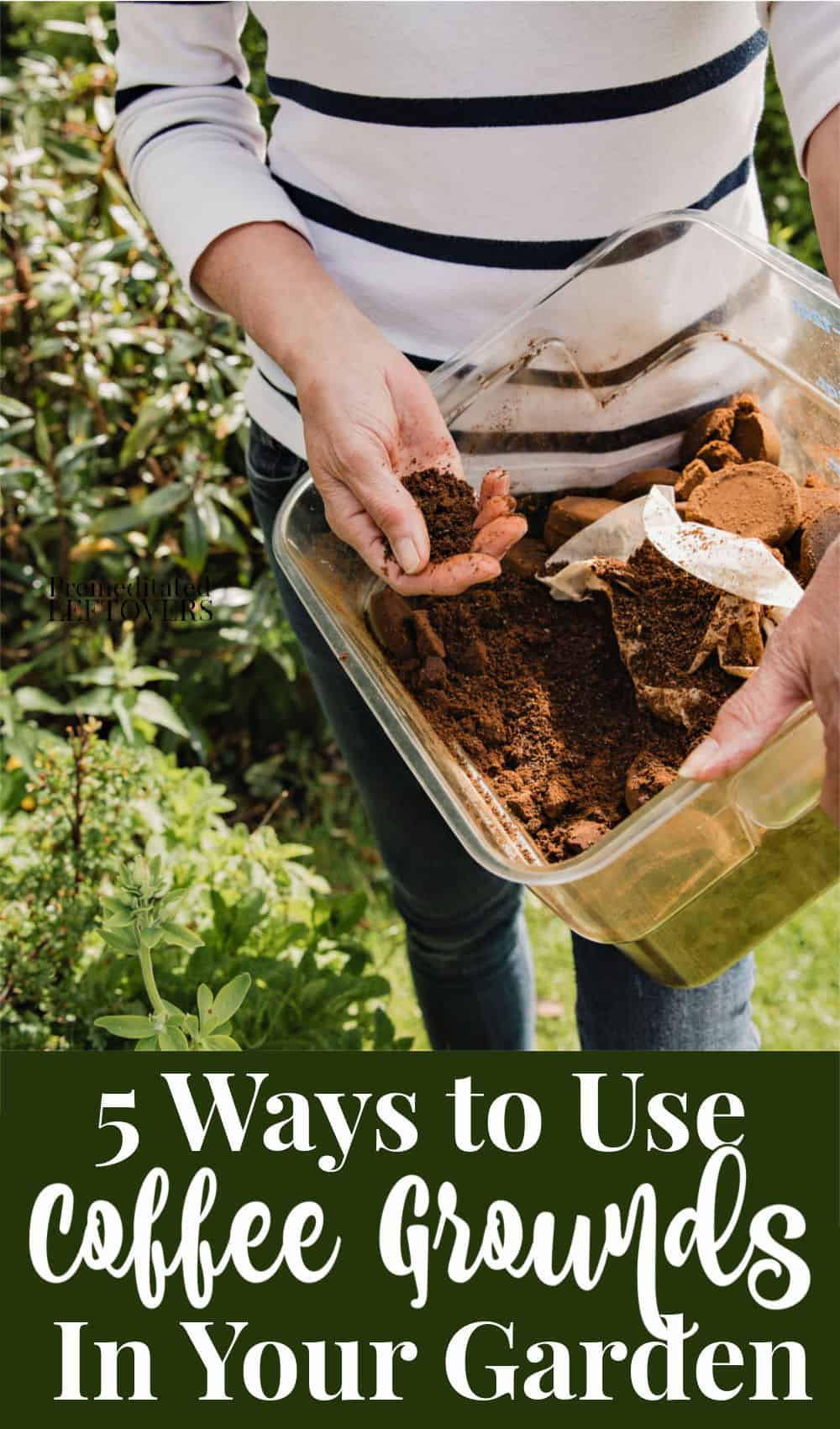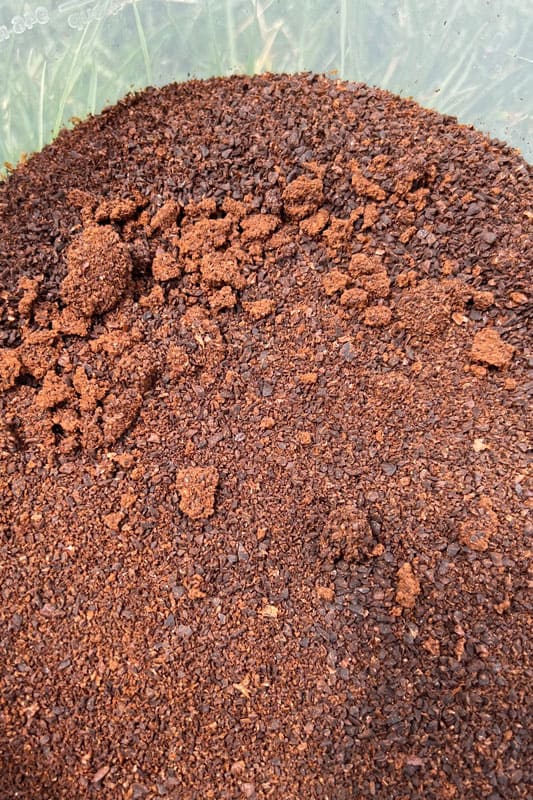What Makes Coffee Grounds a Valuable Garden Resource
Coffee grounds, a byproduct of the coffee brewing process, have long been recognized as a valuable resource for gardeners. Rich in nutrients, including nitrogen, phosphorus, and potassium, coffee grounds can provide a natural and sustainable way to improve soil health and promote plant growth. When used in gardening, coffee grounds can help to increase the water-holding capacity of soil, reduce soil temperature fluctuations, and provide a food source for beneficial microorganisms.
The use of coffee grounds in gardening is not a new concept, but it has gained popularity in recent years as gardeners seek more eco-friendly and sustainable methods for maintaining their gardens. By repurposing coffee grounds, gardeners can reduce waste, lower their environmental impact, and create a more self-sufficient gardening practice. Whether you’re a seasoned gardener or just starting out, incorporating coffee grounds into your gardening routine can have a significant impact on the health and productivity of your garden.
Coffee grounds are particularly beneficial for acid-loving plants, such as azaleas, blueberries, and rhododendrons, as they can help to lower the pH of the soil and provide essential nutrients. Additionally, coffee grounds can be used to improve the structure of heavy clay soils, reduce soil erosion, and even repel pests and weeds. With so many benefits, it’s no wonder that coffee grounds have become a staple in many gardeners’ toolkits.
When considering the use of coffee grounds in your garden, it’s essential to understand the importance of proper application and utilization. Coffee grounds should be used in moderation, as excessive amounts can lead to an overabundance of nutrients and potentially harm plants. By following a few simple guidelines and incorporating coffee grounds into your gardening routine, you can unlock the full potential of this valuable resource and create a thriving, sustainable garden.
How to Use Coffee Grounds as a Natural Fertilizer
Using coffee grounds as a natural fertilizer is a simple and effective way to promote healthy plant growth and improve soil health. To get started, follow these steps:
1. Mix coffee grounds into the soil: Combine 1/2 cup of coffee grounds with 1 gallon of soil. This will help to improve soil structure, increase the water-holding capacity, and provide essential nutrients to plants.
2. Use as a compost activator: Add 1-2 cups of coffee grounds to your compost pile to speed up the decomposition process and create a nutrient-rich compost.
3. Create a coffee ground tea: Steep 1 cup of coffee grounds in 1 gallon of water for 24-48 hours. This liquid solution can be used as a foliar spray to provide plants with a boost of nutrients.
When using coffee grounds as a natural fertilizer, it’s essential to note that they are high in nitrogen, phosphorus, and potassium. This makes them an ideal fertilizer for plants that thrive in acidic soils, such as azaleas, blueberries, and rhododendrons.
Coffee grounds can also be used to improve the health of your lawn. Simply sprinkle 1-2 cups of coffee grounds per 10 square feet of lawn, and rake them into the soil. This will help to improve soil structure, reduce soil compaction, and promote healthy grass growth.
Remember to use coffee grounds in moderation, as excessive amounts can lead to an overabundance of nutrients and potentially harm plants. Start with a small amount and gradually increase as needed.
By incorporating coffee grounds into your gardening routine, you can create a more sustainable and eco-friendly gardening practice. Coffee grounds are a valuable resource that can help to improve soil health, promote healthy plant growth, and reduce waste.
The Science Behind Coffee Grounds’ Positive Impact on Soil
Coffee grounds have a profound impact on soil health, and understanding the science behind this phenomenon is essential for gardeners seeking to harness their potential. One of the primary ways coffee grounds benefit soil is by improving its structure. The high concentration of organic matter in coffee grounds helps to increase the soil’s water-holding capacity, reduce soil compaction, and promote healthy drainage.
Coffee grounds also have a significant impact on soil pH levels. As a slightly acidic substance, coffee grounds can help to lower the pH of alkaline soils, making them more conducive to plant growth. This is particularly beneficial for acid-loving plants like azaleas, blueberries, and rhododendrons, which thrive in soils with a lower pH.
In addition to their impact on soil structure and pH, coffee grounds also play a crucial role in promoting microbial activity. The high concentration of nutrients in coffee grounds provides a food source for beneficial microorganisms, which helps to stimulate their growth and activity. This, in turn, promotes a healthy soil ecosystem, where microorganisms work in tandem with plants to create a thriving and resilient garden.
Furthermore, coffee grounds contain a range of compounds that help to suppress plant pathogens and pests. The high concentration of caffeine, for example, has been shown to inhibit the growth of certain fungi and bacteria, while the antioxidants present in coffee grounds help to protect plants from oxidative stress.
By understanding the science behind coffee grounds’ positive impact on soil, gardeners can harness their potential to create a more sustainable and eco-friendly gardening practice. Whether used as a natural fertilizer, compost activator, or pest repellent, coffee grounds offer a range of benefits that can help to improve soil health, promote healthy plant growth, and reduce waste.
Coffee Grounds as a Pest Repellent and Weed Suppressant
Coffee grounds have been found to possess natural pest-repelling and weed-suppressing properties, making them a valuable addition to any garden. The high concentration of caffeine and other compounds in coffee grounds can help to deter pests such as slugs, snails, and caterpillars, while also inhibiting the growth of weeds.
One of the primary ways coffee grounds repel pests is by releasing a chemical called caffeine, which is toxic to many insects. When coffee grounds are applied to the soil, the caffeine is released, creating a barrier that pests are unable to cross. This makes coffee grounds an effective natural pest repellent for gardens.
In addition to their pest-repelling properties, coffee grounds also have a suppressive effect on weeds. The high concentration of nutrients in coffee grounds can help to promote the growth of desirable plants, while also inhibiting the growth of weeds. This is particularly beneficial for gardeners who struggle with weeds, as it can help to reduce the need for herbicides and other weed control methods.
To use coffee grounds as a pest repellent and weed suppressant, simply sprinkle them around the affected areas. For pest control, apply a thin layer of coffee grounds around the base of plants, while for weed suppression, mix coffee grounds into the soil before planting. It’s also important to note that coffee grounds can be used in combination with other natural pest control methods, such as neem oil and diatomaceous earth, for enhanced effectiveness.
While coffee grounds are a natural and effective pest repellent and weed suppressant, it’s essential to use them in moderation. Over-application can lead to an overabundance of nutrients in the soil, which can harm plants. Start with a small amount and gradually increase as needed, and always monitor the effects on your garden.
Using Coffee Grounds in Composting: Tips and Tricks
Coffee grounds can be a valuable addition to your compost pile, providing a rich source of nutrients and improving the overall health of your soil. However, it’s essential to use them correctly to avoid any potential issues. Here are some tips and tricks for using coffee grounds in composting:
Ideal Ratio: The ideal ratio of coffee grounds to other compost materials is around 10-20%. This will help to ensure that the coffee grounds are fully incorporated into the compost and don’t overpower the other materials.
Monitoring the Composting Process: When adding coffee grounds to your compost pile, it’s essential to monitor the composting process closely. Check the temperature, moisture, and carbon-to-nitrogen ratio regularly to ensure that the compost is breaking down correctly.
Carbon-to-Nitrogen Ratio: Coffee grounds are high in nitrogen, so it’s essential to balance them out with carbon-rich materials like leaves or straw. Aim for a carbon-to-nitrogen ratio of around 20:1 to ensure that the compost breaks down correctly.
Adding Coffee Grounds to the Compost Pile: When adding coffee grounds to the compost pile, it’s best to mix them in with other materials rather than adding them in large quantities. This will help to prevent the coffee grounds from forming clumps and ensure that they are fully incorporated into the compost.
Using Coffee Grounds in Vermicomposting: Coffee grounds can also be used in vermicomposting, a type of composting that uses worms to break down organic materials. The worms will help to break down the coffee grounds and create a nutrient-rich compost that is perfect for use in the garden.
Benefits of Using Coffee Grounds in Composting: Using coffee grounds in composting can have a range of benefits, including improving soil structure, increasing the nutrient content of the soil, and reducing waste. By incorporating coffee grounds into your composting routine, you can create a more sustainable and eco-friendly gardening practice.
Coffee Grounds and Plant-Specific Benefits: What You Need to Know
Coffee grounds can be a valuable resource for gardeners, providing a range of benefits for different types of plants. While coffee grounds can be used as a general fertilizer, they are particularly beneficial for certain types of plants that thrive in acidic soils.
Acid-Loving Plants: Coffee grounds are particularly beneficial for acid-loving plants like azaleas, blueberries, and rhododendrons. These plants thrive in soils with a lower pH, and coffee grounds can help to provide the necessary acidity. By incorporating coffee grounds into the soil, gardeners can create a more favorable environment for these plants to grow.
Vegetables: Coffee grounds can also be beneficial for vegetables, particularly those that prefer slightly acidic soils. Tomatoes, peppers, and cucumbers are all good candidates for coffee ground fertilization. By adding coffee grounds to the soil, gardeners can provide these vegetables with a boost of nutrients and improve their overall health.
Flowers: Coffee grounds can also be used to fertilize flowers, particularly those that prefer slightly acidic soils. Roses, carnations, and chrysanthemums are all good candidates for coffee ground fertilization. By adding coffee grounds to the soil, gardeners can provide these flowers with a boost of nutrients and improve their overall health.
Herbs: Coffee grounds can also be used to fertilize herbs, particularly those that prefer slightly acidic soils. Basil, mint, and lemongrass are all good candidates for coffee ground fertilization. By adding coffee grounds to the soil, gardeners can provide these herbs with a boost of nutrients and improve their overall health.
When using coffee grounds for plant-specific benefits, it’s essential to tailor the application accordingly. For example, acid-loving plants may require a higher concentration of coffee grounds, while vegetables and flowers may require a lower concentration. By understanding the specific needs of your plants, you can use coffee grounds to create a more favorable environment for growth and development.
Common Mistakes to Avoid When Using Coffee Grounds in Your Garden
While coffee grounds can be a valuable resource for gardeners, there are several common mistakes to avoid when using them in your garden. By being aware of these potential pitfalls, you can ensure that you are using coffee grounds effectively and safely.
Over-Application: One of the most common mistakes gardeners make when using coffee grounds is over-application. Too much coffee can lead to an overabundance of nutrients in the soil, which can harm plants. Start with a small amount and gradually increase as needed.
Contamination: Coffee grounds can be contaminated with mold, bacteria, or other pathogens if not stored properly. Make sure to store coffee grounds in a dry, well-ventilated area to prevent contamination.
Interactions with Other Soil Amendments: Coffee grounds can interact with other soil amendments, such as fertilizers or pesticides, in unintended ways. Be sure to research any potential interactions before using coffee grounds in combination with other soil amendments.
Incorrect pH Levels: Coffee grounds can affect the pH levels of your soil, so it’s essential to monitor the pH levels regularly. If the pH levels become too acidic or too alkaline, it can harm plants.
Not Mixing with Other Compost Materials: Coffee grounds should be mixed with other compost materials, such as leaves or straw, to create a balanced compost. Not mixing coffee grounds with other materials can lead to an overabundance of nutrients in the compost.
Not Monitoring the Composting Process: Coffee grounds can be added to the compost pile, but it’s essential to monitor the composting process regularly. Check the temperature, moisture, and carbon-to-nitrogen ratio regularly to ensure that the compost is breaking down correctly.
By avoiding these common mistakes, you can ensure that you are using coffee grounds effectively and safely in your garden. Remember to always follow best practices and research any potential interactions or effects before using coffee grounds in your garden.
Maximizing the Benefits of Coffee Grounds in Your Garden
Coffee grounds can be a valuable resource for gardeners, providing a range of benefits for soil health, plant growth, and pest control. By incorporating coffee grounds into your gardening routine, you can create a more sustainable and eco-friendly gardening practice.
Improved Soil Health: Coffee grounds can help to improve soil structure, increase the water-holding capacity, and provide essential nutrients to plants. By adding coffee grounds to your soil, you can create a more favorable environment for plant growth.
Increased Crop Yields: Coffee grounds can help to increase crop yields by providing plants with a boost of nutrients. By using coffee grounds as a natural fertilizer, you can promote healthy plant growth and increase crop yields.
Pest Control: Coffee grounds can be used as a natural pest repellent and weed suppressant. By incorporating coffee grounds into your gardening routine, you can reduce the need for chemical pesticides and herbicides.
Sustainable Gardening Practice: By using coffee grounds in your garden, you can create a more sustainable and eco-friendly gardening practice. Coffee grounds are a natural and renewable resource that can help to reduce waste and promote environmental sustainability.
Experiment with Coffee Grounds: Don’t be afraid to experiment with coffee grounds in your garden. Try using them as a natural fertilizer, compost activator, or pest repellent. With a little creativity and experimentation, you can unlock the full potential of coffee grounds and create a thriving and sustainable garden.
By incorporating coffee grounds into your gardening routine, you can create a more sustainable and eco-friendly gardening practice. With their nutrient-rich composition and potential benefits for soil health and plant growth, coffee grounds are a valuable resource for gardeners. So why not give them a try and see the benefits for yourself?









